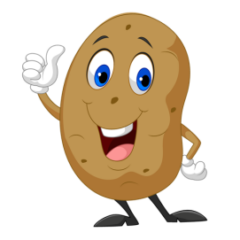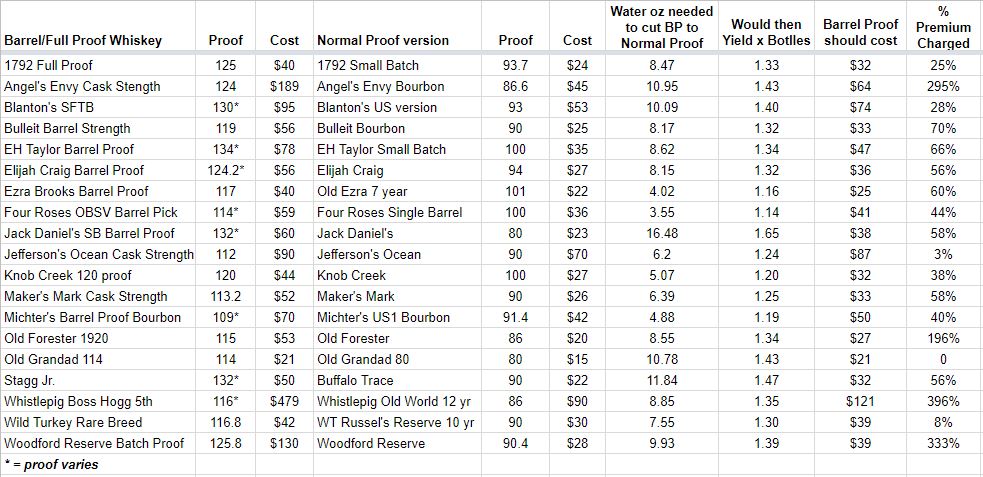Have you ever made a batch of the Old Weller Antique/Weller 12 mix? If so, how long does it need in the bottle to marry together for the best results? Is it instant? Do you wonder about these things or is it just the whiskey geek in me? I was of the opinion that if you take 2 different bourbons, put them in a bottle and give them a good shake, they would be as mixed together as possible. While visiting various distilleries and listening to folks much more knowledgeable I kept hearing it takes time for whiskies to come together, or marry.
If you noticed I called it OWA/W12 mix and not the much more common social media term of “Poor Man’s Pappy.” This is because I know the gentleman that devised this mix, Gary Gillman. Gary was actively involved in the forums of StraightBourbon.com and was routinely vatting different whiskeys. So much so that we referred to his process as Gillmanization. When Weller Centennial was discontinued around 2008, Gary developed this mix to be a replacement for Centennial and not as a substitute for Pappy. I also try to refrain from using the word blend and instead use vatting, marrying or mix. Blended US whiskies with their use of GNS, aka Vodka, as well as coloring/flavorings have a poor, deservedly so, reputation.
I decided to put this to a test. This was done a few years back before I started blogging. I mixed up one batch using the typical 60% OWA and 40% W12 which I let marry in a bottle for 30 days. The other batch used the same ratio but was mixed together with a good bottle shake right before the test. I used the same blind triangle test as I did in the “Did my bourbon change in the bottle?” tests. Testers would taste 3 samples; 2 from the bottle that was freshly mixed and 1 from the bottle married for 30 days, or vice versa. Either way, one of the 3 samples is the odd sample and if change is perceptible enough then it would be identifiable. I did not ask which tasted better, I only asked if they could identify the odd sample. We had about 6 people at this whiskey get together and they all tried this test. A few repeated the test with new blind samples so that I had a total of 10 tests. 9 out 10 testers identified the odd sample. Beyond that most also correctly identified which was the aged for 30-day sample. One tester did this twice by just nosing samples. My conclusion is that the time in the bottle the whiskey marries together will noticeably change the taste.
I’m not sure what the optimal amount of time involved would be to properly marry. Is it 2 weeks or 2 months? So I asked an industry expert, Nancy L. Fraley, for her opinion. Nancy has worked with many distilleries on blending and whiskey maturation. While I asked her about this OWA/W12 mix, should gave me a much more elaborate answer ranging from a producer production scale to relating that to our small consumer project. Here is Nancy’s full answer:
“From a production standpoint, I was trained and have seen from experience that after barrels are harvested and dumped, the longer they are allowed to marry in stainless steel tanks (and always of a passivated grade of either 316L or 2205), the better the mixture will be. Whenever I marry casks, doing a minimum of 1 month, although 3 to 6 months or longer in stainless is what I always prefer whenever possible, assuming the production schedule allows that and the tank space is available.
Depending upon the product I’m working on, if I can allow a blend to marry in exhausted casks rather than using a passivated grade of stainless steel, that is even better because it is an “organic” oxidation vessel, with gentle ingress and egress of oxygen, which allows the fatty acids, esters, aldehydes, organic acids, etc. to marry and recover from the mixing more quickly. Exhausted casks are perfect for this sort of thing, because when you have finished a product, you are not looking for new tannins or other oak extractive products, and the exhausted barrel acts as a sort of “lung”. I’ve used exhausted casks anywhere from 1 month to several years for marriage. But if you are using exhausted casks as oxidation vessels for whiskey marriage, then it is also important that you have the right maturation conditions, with proper temperature and humidity requirements for what you’re trying to accomplish.
After a finished whiskey is bottled, I always prefer that the newly bottled whiskey have a chance to “rest” before going out into the world to distributor’s warehouses, retail stores, or in connoisseur’s liquor cabinets. The bottling process is quite aggressive and can literally “shock” a spirit, so if you don’t allow at least the minimum amount of time for the bottles to rest, it will be very noticeable to the consumer. For this, whenever possible, I like to allow anywhere from 2 weeks to 1 month.
Now, on the consumer side of things, for connoisseurs who have taken an interest in blending 2 or more whiskeys at home and then putting them back in a bottle in order to experiment with new taste profiles, you might have noticed that when you first mix the whiskeys together and then taste it fairly soon after the mixing, it will usually be somewhat aggressive, hot, and angular. You might even notice that this effect is amplified the faster you mix the liquids together, whereas if you go more slowly when mixing the liquids, it will be less aggressive. It will also taste more aggressive if you vigorously mix the liquids together once in the bottle.
Why is this? Well, first of all, you have to be very gentle with alcohol, whether you are mixing barrels in a production setting or mixing different whiskeys together as a connoisseur. When you first mix different alcohols together, the molecular bonds are disjointed and interrupted, and thus, the mix will taste somewhat “spiky” and angular. You might not be very pleased with your initial attempt at mixing when you first taste it. But it takes time for the fatty acids, alcohol molecules, and other congeneric content to bond properly. And also, you have to remember that even when you allow a new mix to marry in a bottle, there is in effect some sort of “maturation” going on. Legally, of course, you cannot have “maturation” this way, but there are indeed chemical changes which are occurring in the presence of oxygen that take time to create.
As a general rule, I find that at least 1 month is necessary for this process to occur in a glass bottle. If you experiment with this at home, I would recommend making up a batch of 2 or more whiskeys that you mix that is large enough to take a taste of it every week to observe the changes. The first time you taste, do it immediately after you have blended your components together and take copious tasting notes. Keep the remainder of your sample in a dark, cool place. A week after you make the blend, taste it again and take notes. Do this every week for at least a month, and two months if possible.
Over time, you might notice that the blend starts to “relax,” become less angular each time you taste, until it eventually becomes rounder and softer on the palate. Notice whether or not new flavors and aromas develop. For example, you might notice some citrus notes developing, whereas those notes were not present in any of the component whiskeys. Occasionally, you might find that your home blend develops to a point, but then goes “flat” or dead, where it doesn’t seem very interesting anymore. In that case, try making minor adjustments to it, such as adding maybe no more than 5 mL of another whiskey component that might have more spice, sweetness, fruitiness, etc. You can always add more, but it is best to make these adjustments a little at a time and watch how they start to affect the mix before adding more.”

